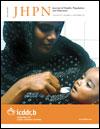Assessment of Implementation of Integrated Management of Neonatal and Childhood Illness in India
DOI:
https://doi.org/10.3329/jhpn.v29i6.9900Keywords:
Child survival, Infant health, Integrated management of childhood illness, Neonatal mortality, Newborn care, Performance evaluation, IndiaAbstract
At the current rate of decline in infant mortality, India is unlikely to achieve the Millennium Development Goal on child survival. Integrated Management of Neonatal and Childhood Illness (IMNCI), adapted from the global Integrated Management of Childhood Illness to enhance the focus on newborns and on community health workers, is the central strategy within the National Reproductive and Child Health Programme to address high infant mortality. This paper assessed the progress of IMNCI in India, identified the programme bottlenecks, and also assessed the effect on coverage of key newborn and childcare practices. Programme data were analyzed to ascertain the implementation status; rapid programme assessment was conducted for identifying the programme bottlenecks; and results of analysis of two rounds of district-level household surveys were used for comparing the change in the coverage of child-health interventions in IMNCI and control districts. More than 200,000 community health workers and first-level healthcare providers were trained during 2005-2009 at a variable pace across 223 districts. Of the reported births (n=1,102,573), 65.5% were visited by a trained worker within 24 hours, and 63.1% were visited three times within 10 days. Poor supervision and inadequate essential supplies affected the performance of trained workers. During 2004-2008, 12 early-implementing districts had covered most key newborn and child practice indicators compared to the control districts; however, the difference was significant only for care-seeking for acute respiratory infection (net difference: 17.8%; 95% confidence interval 2.3-33.2, p<0.026). Based on the early experience of IMNCI implementation in different states of India, measures need to be taken to improve supportive supervision, availability of essential supplies, and monitoring of the programme if the strategy has to translate into improved child survival in India.
DOI: http://dx.doi.org/10.3329/jhpn.v29i6.9900
JHPN 2011; 29(6): 629-638
Downloads
386
223

